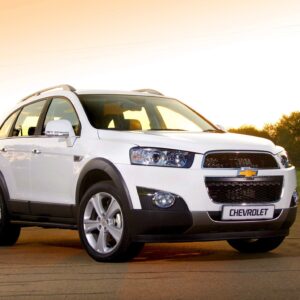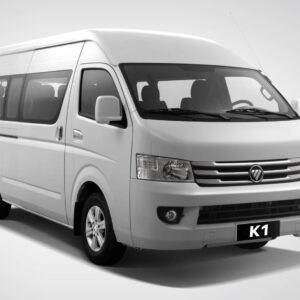Discover 2000 years old Ancient Fortresses on the way from Khiva to Nukus
Daytrip Duration: 10-12 hours
Sightseeing time: 4-5 hours
Driving time: 5-6 hours
Driving Distance: 340 km.
Included: Hands-Free Brochures, a good drivers with new Cars with AC, pick up and drop off at your location and Mineral water (0.5l. per person)
Not Included: Entrance tickets, meals, camel riding, Yurt Camp stay & etc.
Making Reservation of our trips we only need from your side to confirm and provide following details related to your reservation in order to check availability, book and organize it with our team:
1. Name of the Trip, Transfer or Service interested.
2. Date of the Trip, Transfer or Service interested.
3. Please state type of Transport and confirm the Price.
4. Number of Travelers (luggage if available) in your group.
5. Full names of all Travelers including info about Citizenship and Passport/ID Card numbers.
6. Pick up and starting time of the Trips or Transfers (contact us for recommendations).
7. Pick up and starting place of the Trips or Transfers (name of your hotel, Airport or Railway Station)
8. Drop off and ending place of the Trips or Transfers (name of your hotel, Airport or Railway Station)
9. Please state your contact information: Email, Mobile Phone or WhatsApp Numbers.
That is all we need to know from your side in advance to check availability, make a reservation or to organize the requested services.
We pick you up from Airport / Train Station or from your hotel both in Khiva or Urgench and start the Daytrip. You can start the Daytrip at any time of the day. It is recommended to start the trip in the morning after breakfast around 08:00 am. It takes about 90 minutes to drive from Khiva to the first Castle – Ayaz Kala.
Ayaz Kala is the one of the most spectacular fortresses in the area. There are in fact, not one but three fortresses clustered together on and around a prominent hill at the Eastern end of the Sultan-Uiz-dahg range. The fortress provided defense against nomad raids. A gravel road leads up to a small cluster of Yurts, a tourist rest center overlooking a shallow but picturesque lake. The Fort dates to medieval times.
There is a lake – Akchakul Lake between Toprak and Ayaz Kala. There are also Yurt camps and restaurants next to the lake where visitors can enjoy local meals. Sometimes visitors enjoy swimming and sand bath in Akchakul Lake.After break and stop in Akchakul Lake the next fortress is Toprak Kala. It is dated in the Kushan period, around the 2nd and 3rd centuries CE and was the royal residence of the kings of the Khorezm. The place at the North West corner of the settlement is one of the largest and best-preserved monumental buildings of the Kushan era in Central Asia. The place, having first served as a Royal sanctuary, was briefly abandoned in the early 4th century and then after some restorations, was used as an administrative citadel for the city.
Next Fortress Kizil Kala was originally constructed in the Late Antique period, 1st to 4th centuries CE, but was abandoned and then rebuilt in the 12th-13th centuries on the eve of the Mongol invasions. There is some debate about how this fortress may have been used in ancient times, with some scholars proposing that it was a garrison barracks for troops, whilst others suggest it was an early example of the many fortified manor houses that were typical of Khorezm in the early medieval periods.
Jampik Kala. The earliest foundations are ancient (4th BCE – 1st CE) but the walls visible today date to the medieval period, in the 9th to 10th centuries CE. There are domestic and industrial areas within the fortress which date to the 12th to 14th centuries CE. On the Northwest side of the fortress is a palace building or citadel with walls that preserve the elegant fluted facade moldings indicative of medieval architecture in Khorezm.
Gyaur Kala – was founded in the Early Antique period and continued in use until the 4th Century CE. Today all that can be seen of the fortress is the north wall and a short section of the western one. The fortress originally had a trapezoidal plan, with typical Khorezmian double walls and double stores archer’s galleries, towers, and arrow slits. Only base of the eastern wall remains, while the southern side has disappeared completely, washed away by the river. Gyaur Kala remained in use into the Kushan period, around the 3rd century CE.
After visiting Gyaur Kala, It is possible to stop at the Minimarket or Restaurant again to have a lunch or buy something. Also, possible to use the bathroom there. Please ask our driver to stop there is you want to have a break.
Last fortress for the day is Chilpik Kala. Chilpik Kala is a Dakhma or Tower of Silence which was used by people of the Zoroastrian faith for exposure of the dead. The bodies were laid out under the open sky for the birds to eat. When the bones were cleared, families collected them and placed them in clay or stone ossuaries for burial. The building was originally constructed in the first centuries CE but saw a phase of rebuilding in the 7th – 8th centuries and again in the 9th – 10th centuries.
This is the end of the Daytrip. It takes about 40 minutes to drive from Chilpik Kala to Nukus. We may drop you off in Nukus Airport / Train Station or in your hotel at the end of the Daytrip and end the Daytrip there.





